Saline Tattoo Removal
PMUHub’s guide through one of the most effective methods for removing old, unwanted or botched permanent makeup. Read all about PMU and microblading saline tattoo removal.
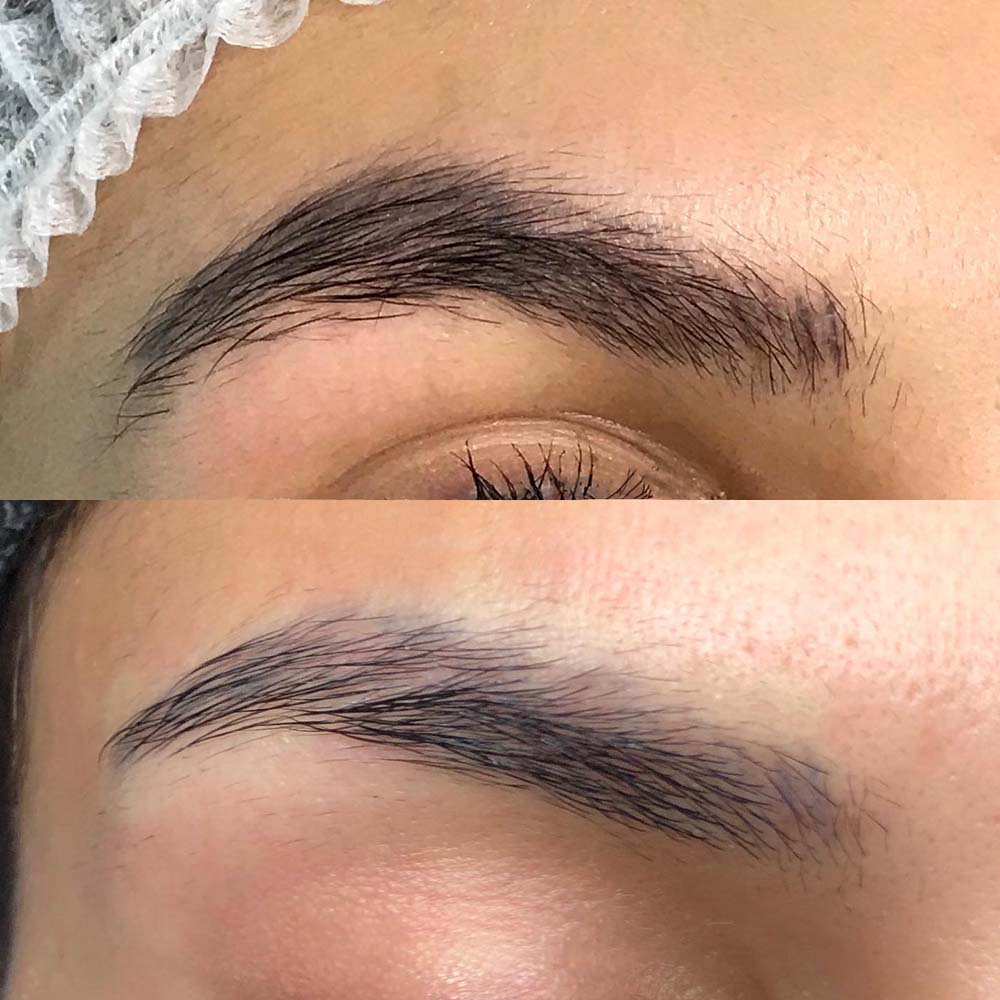
Image source : PMUhub
Explore more saline tattoo removal topics
When permanent makeup works out – you love the results, the treatment was performed with proper technique, and the pigments fade evenly – it’s a true life-saver. But when it doesn’t, it can become a huge source of frustration and insecurity.
The huge explosion in the demand for PMU treatments has brought about a surge in the demand for PMU removal. Sometimes, pigments don’t fade at the pace they’re supposed to, they turn color or migrate, or clients simply grow bored with their PMU and want to change it up.
That’s where saline tattoo removal steps in.
Read our guide through saline tattoo removal to find out how you can get rid of unwanted brow tattoos, eyeliner, and lip liner.
What PMU Can Be Removed with Saline Tattoo Removal?
This technique works for all kinds of PMU except for full lip color and lip blush (it’s not safe for the skin of the lips) and scalp micropigmentation (the area is simply too large to be treated this way).
That means you can get lip liner, eyeliner, or saline eyebrow tattoo removal, but not all techs work on all areas. Microblading saline removal is available everywhere, as it’s not that risky. The same goes for lip liner tattoo removal if the unwanted pigments are outside the vermilion border – on the skin around the lips rather than on the lips themselves.
Techs are still perfecting removing pigments from the lips themselves – hardly any of them offer this removal service.
But not all techs offer eyeliner removal. Working on the delicate skin of the eyelids requires a special skill and expertise, so if you want to get rid of an eyeliner tattoo, finding a tech who’s able to do it may be a challenge.
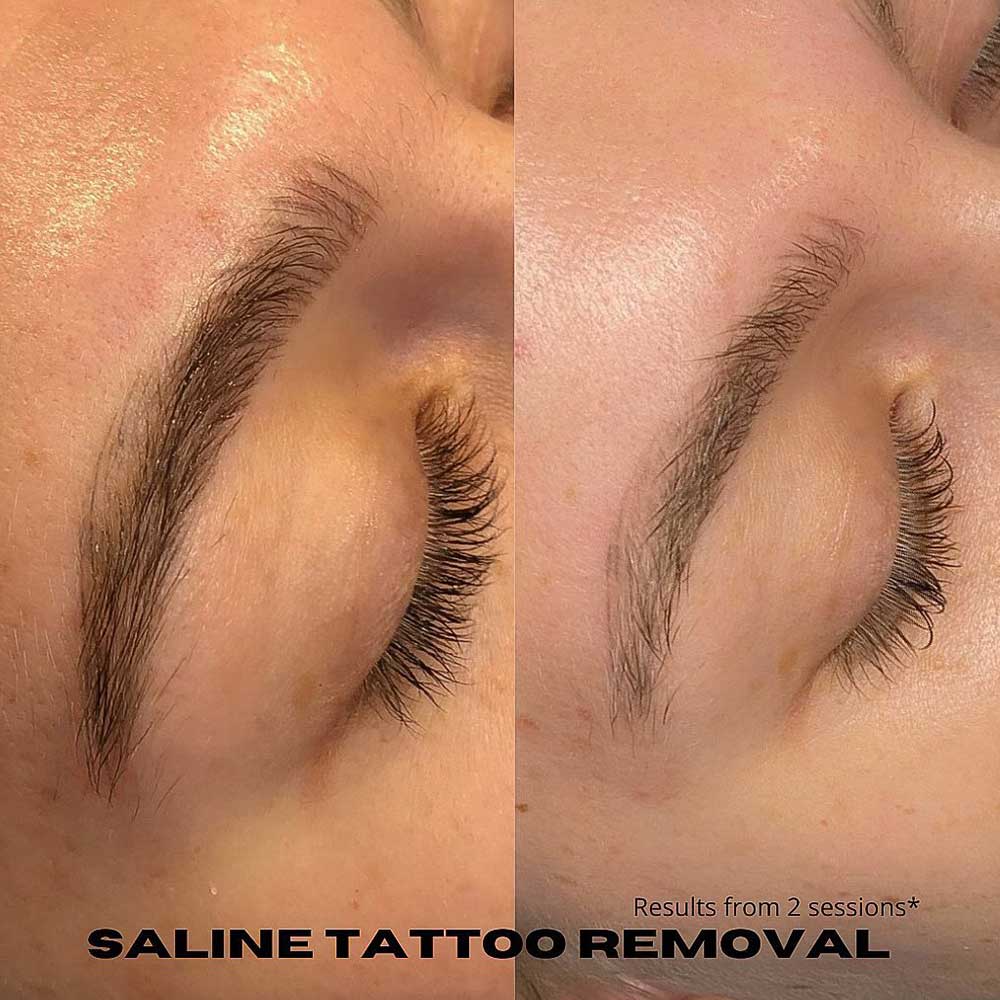
Can Any Type of Pigment Be Removed with Saline Tattoo Removal?
With saline removal permanent makeup in all colors can be removed, unlike the laser, which isn’t suitable for removing reddish and yellow pigments.
When Can I Get Saline Removal?
You can get emergency removal within 48 hours after the PMU treatment if you immediately regret getting PMU.
If you wait longer than that, you will have to wait for 6-8 weeks until the skin has completely healed from PMU application. Otherwise, the tissue can be damaged and permanent scarring can occur.
How Does Saline Removal Work?
Saline removal is basically reverse tattooing. The technique used is similar to whatever was used for initial pigment implementation. Saline microblading removal can be done with a machine or a manual shading tool. If you want to remove PMU applied with a machine, the tech will use a machine.
The tool or a machine is used to open up the skin above the unwanted pigments. Then, a special removal solution based on salt – a saline solution – is injected into the cuts. The solution dries up the pigments. That’s the first half of the process.
Once the cuts start to heal, a scab is formed. The pigments that were dried up get lifted and stuck in the scab, and once the scab falls off, the pigment goes with it. That’s why some PMU removal techs call this process controlled scabbing.
How Does Emergency Saline Removal Work?
If you immediately decide you don’t like your PMU tattoo, you can get emergency saline tattoo removal within 48 hours of the procedure.
It’s done by applying the saline solution directly onto the treated area. There’s no need to open up the skin, since it still hasn’t started closing up from the PMU treatment.
How Many Sessions of Saline Tattoo Removal Do I Need?
Most clients need between 2 and 6 saline tattoo removal sessions to completely remove the PMU, but there are cases where as many as 10 sessions are necessary to get rid of all the pigment.
The course of the saline tattoo removal is very individual and unpredictable. It depends on:
- how saturated with pigment the tattoo is
- how old it is
- how deep the pigments were injected
- the composition of the pigment
- and how your skin reacts to the treatment.
So be prepared for multiple sessions if you want to remove the tattoo completely. If, however, you’re planning on getting a fresh PMU, it may be enough to just lighten the old tattoo enough for it to be camouflaged. In that case, 1-2 sessions may be enough.
Book a consultation appointment with the removal tech so that they can assess the situation.
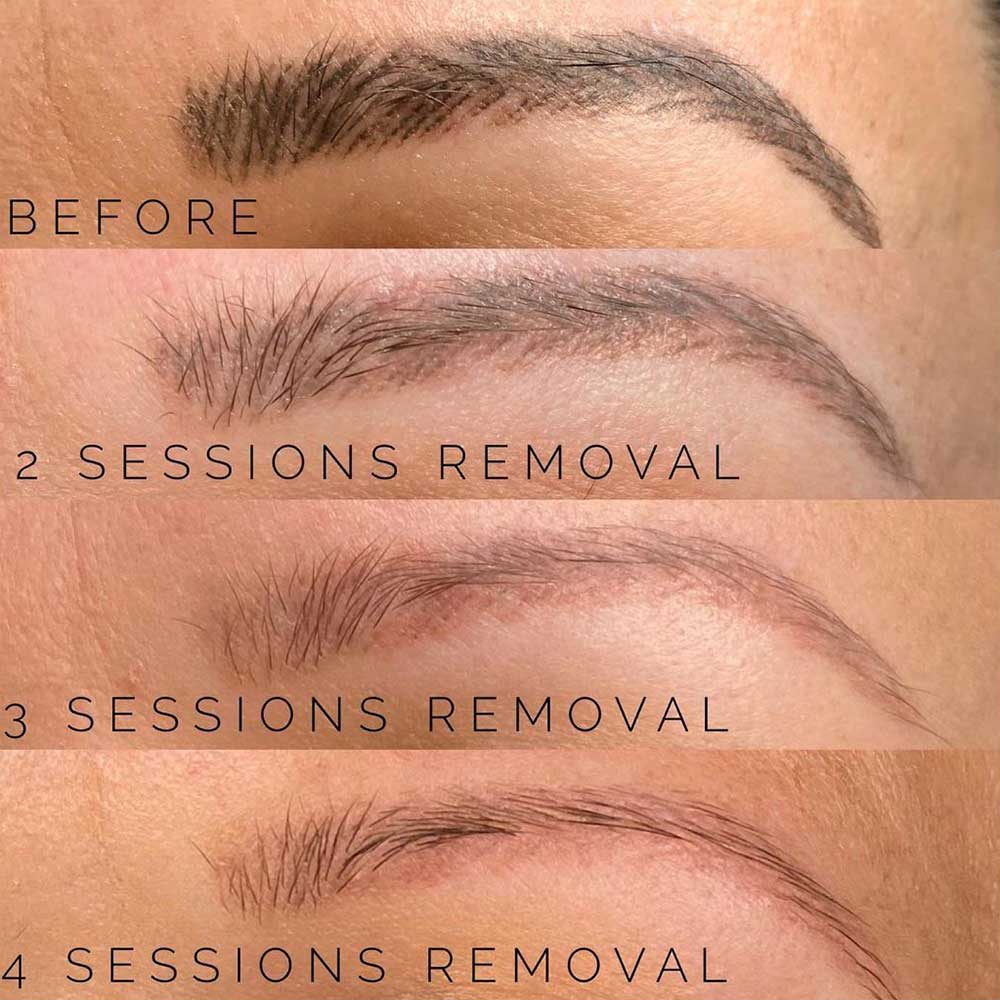
How Long Do I Have to Wait Between Sessions?
After each saline tattoo removal session, the skin needs time to heal and recover before repeating the treatment – 6 to 8 weeks.
If you don’t let the skin heal completely, there’s a risk of damaging the skin and permanent scarring. This means that during saline removal permanent makeup still stays visible, albeit less with every session, and that the process can last for months.
Saline Tattoo Removal Healing Process
Since the technique is basically the same as pigment implementation, the saline removal healing process will be very similar to the period after getting PMU.
Right after the treatment, the area treated will be red, tender, and even a bit swollen. As the micro-wounds start to heal, you’ll go through a scabbing stage, and once the scabs fall off, the surface healing is over. It’s crucial you don’t pick the scabs and let them fall off on their own – otherwise, you risk damaging the skin and developing an infection.
Internal healing will continue for about 4 weeks more – the tissue needs to recover completely.
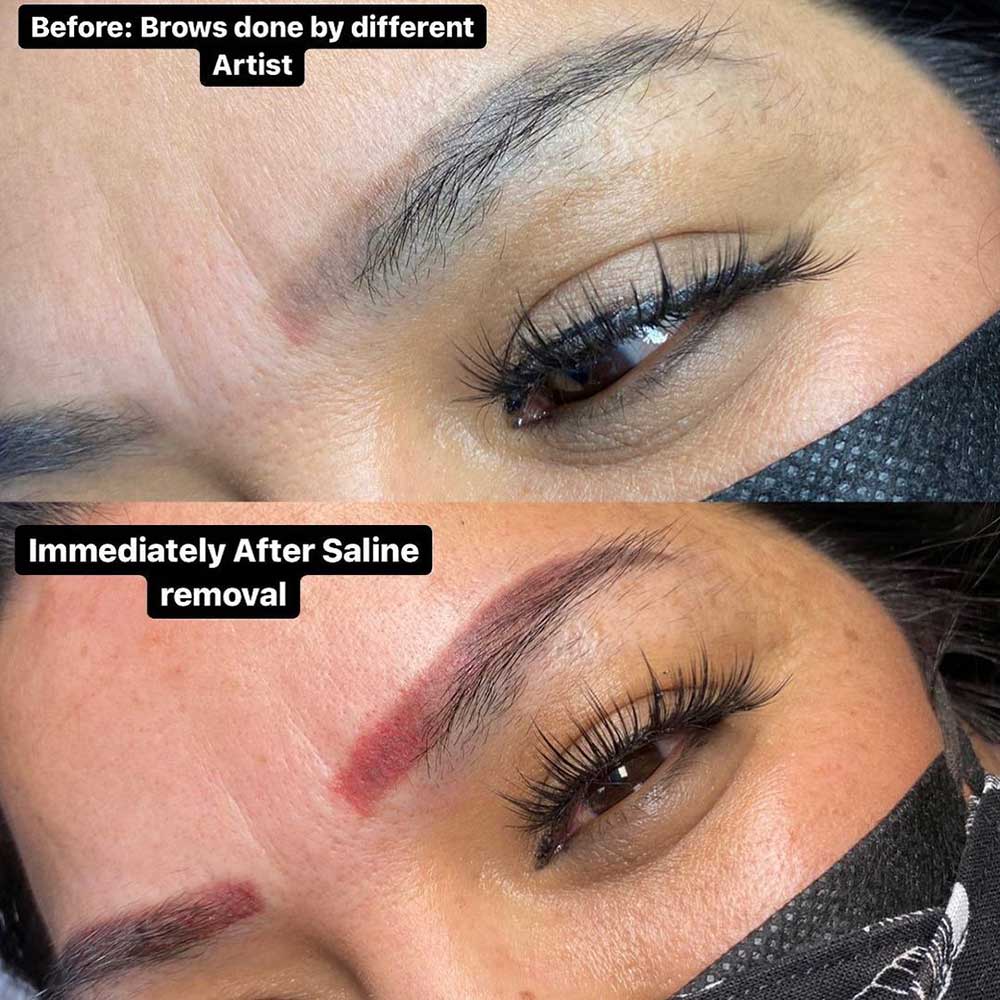
Saline Removal Aftercare
Just like it was the case with initial implementation, you need to follow a saline removal aftercare routine to make sure the area heals properly.
Follow these tips after each saline tattoo removal treatment to avoid complications:
- Keep the treated area clean and dry during the first 2-3 days. Clean as instructed by your removal technician.
- From day 3, use a moisturizer recommended by the technician to help the wound heal faster and to minimize itching.
- Don’t pick the scabs if you want to avoid scarring.
- Avoid heat, hot water, heavy sweating, swimming, and sun exposure.
- Stay hydrated.
- Avoid high-pressure water.
- Refrain from alcohol and smoking.
Saline Tattoo Removal for Each PMU Treatment
Saline Eyebrow Tattoo Removal
Saline eyebrow tattoo removal works for any brow PMU style, and even for outdated tattoos done with ink. It’s quite safe, and the risk of scarring is minimal if the tech knows what they’re doing – they’re not supposed to go too deep, and they shouldn’t overwork the skin – it’s safe to go slow with saline microblading removal.
PMU Eyeliner Saline Removal
Trickier than saline eyebrow tattoo removal.
Not all removal technicians work on eyelids, as the skin in that area is very thin and delicate, so it requires a special technique and expertise. If you’re dealing with an unwanted eyeliner, it may be a challenge finding an artist who is skilled enough to remove it.
Be careful! A tech who doesn’t have experience working on that particular area can cause permanent scarring.
With eyeliner PMU, the most common issue is pigments migrating outside the desired outline, causing the tattoo to look smudged and messy. These minor imperfections can be solved within 1 or 2 sessions.
If you want to remove the entire tattoo, it will probably take 4+ sessions.
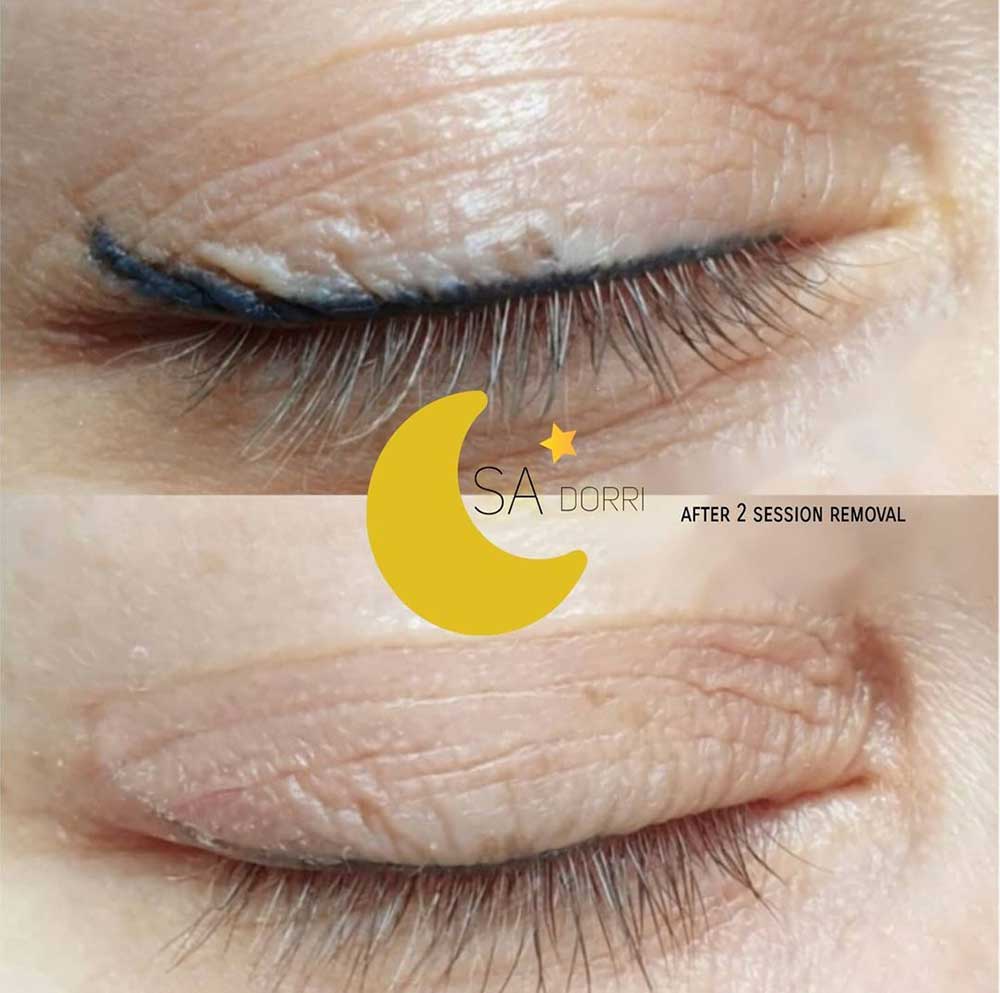
Lip Tattoo Saline Removal
If you’re dealing with an unwanted PMU lip liner on the skin above the lips rather than on the lips themselves, the issue can be solved quite easily with saline tattoo removal. The skin around the lips is relatively thick and the risk of scarring is minimal.
Full lip color or lip blush removal is not advisable.
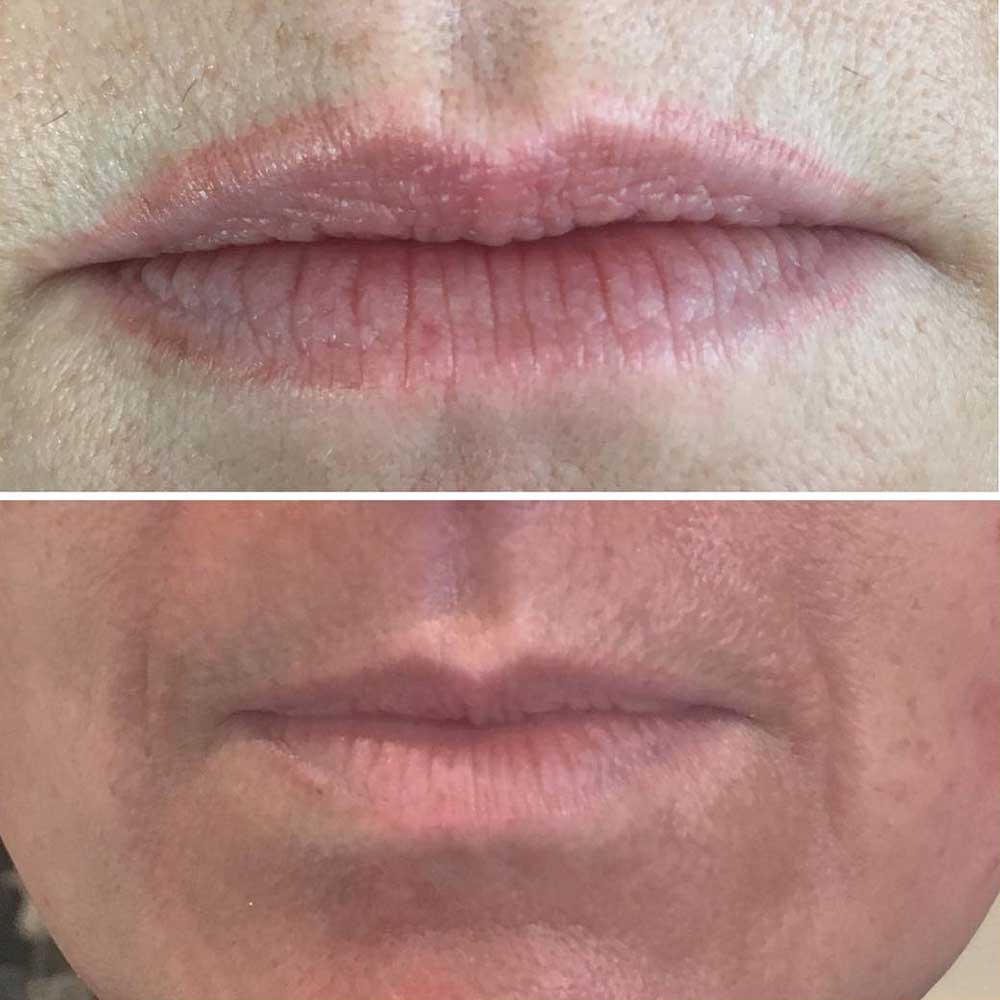
Scalp Micropigmentation Saline Removal
It’s not possible to remove scalp micropigmentation with saline removal. The area is simply too large to be treated this way. The only option is laser removal.
Is Saline Tattoo Removal Safe?
Unlike laser removal, saline tattoo removal is safe for dark skin, too.
If done right, PMU and microblading saline removal is completely safe. That said, the technician has to be trained, certified, and have a meticulous technique.
The potential risks of saline removal are:
- Scarring. If the technician cuts too deep or overworks the skin, there’s the chance of permanent scarring occurring.
- Infection. Since the skin is broken, there’s always the chance of catching an infection. That’s why you should only book with certified techs who work in sterile conditions, and follow the prescribed aftercare routine as closely as possible.
- Allergy. The saline solution used could potentially cause an allergic reaction. That’s why the tech should do a patch test before the treatment.
Does Saline Tattoo Removal Hurt?
Since numbing cream is applied to the area before the procedure starts, you shouldn’t feel pain during the procedure. That said, there might be some discomfort.
The process is very similar to the initial pigmentation, so you should expect the same experience. You may feel pressure or a scratching sensation.
How Much Does Saline Tattoo Removal Cost?
Saline tattoo removal is charged per session, and the cost varies from one technician to another. The average cost of a session is around $250, but the prices range from $100 to $500. The price primarily depends on the experience of the tech, so a higher cost is often justified.
Some techs charge a different price for emergency saline tattoo removal. The price for that is either cheaper than for regular removal since they don’t need to open up the skin, or higher, because of short-notice bookings. In any case, the difference is no more than $50 to $100.
Saline Removal Pros and Cons
The benefits:
- It’s effective
- It works for almost all PMU procedures
- It works for all pigment colors
- It’s safe for dark skin, too
The downsides:
- It can get pricey, since you need multiple sessions
- It can drag out for months
- There’s a risk of permanent scarring and infection, albeit minimal
- It entails a healing process after each session
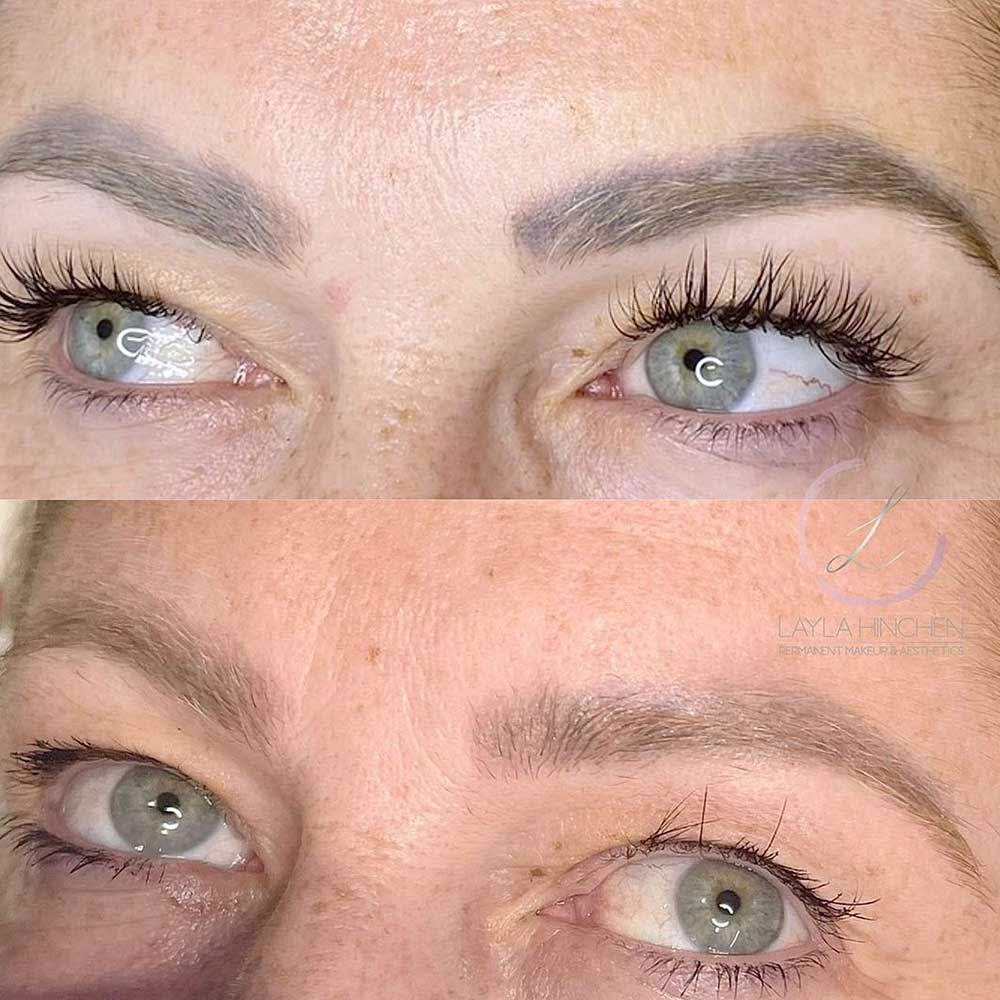
Saline Tattoo Removal – Main Takeaways
Saline tattoo removal is one of the most efficient methods of removing unwanted PMU. It works for almost all PMU treatments and can remove pigments of any color, unlike laser, which doesn’t work for reddish and yellow pigments. It requires multiple sessions – 2 to 6 usually – each priced at around $250. The sessions need to be booked 6-8 weeks apart in order to allow the skin to heal properly.
weekly insight into PMU insdustry
Subscribe to our FREE newsletter. 100% good stuff.

support us so we can keep providing you with free education , information and inspiration.
